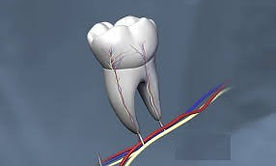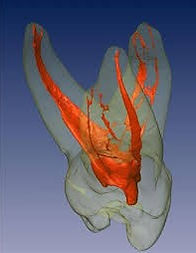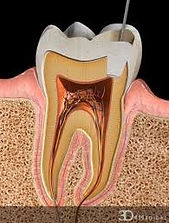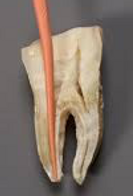Root Canal Treatment
Root canal treatment is very technical approach to treat defected or dead nerves of our teeth. The infected nerves are treated with a series of visits to the dentist where the affected tooth undergoes pulpectomy (nerve removal) under local anesthesia, followed by repeated effort of cleaning the pulp chamber and canal of the tooth. Root canal treatment can be a huge relief for severe tooth ache caused by nerve pain, most often by bacteria or severe gum disease. It is a technic sensitive procedure done under proper isolation of the tooth to ensure a good success rate.
Ever had a SHARP, SHOOTING pain all of a sudden in your gums? The pain comes like a wave, it throbs and hurts so bad that makes you want to cry? You can’t eat, can’t sleep, and the pain sometimes does not even subside with the use of pain killers.
“The pain is spontaneous, appears
without any stimulus, disturbs
your sleep at night, throbs and
radiates to other parts of your
head and jaw…”
This is a classic sign of irreversible pulpitis (nerve damage), where the nerves of the tooth is involved. The damage, or infection to the tooth is so severe that it constantly hurts the tooth and the surrounding gums. Sometimes the pain can be so extensive that it might be confused to be coming from the neighboring teeth. All the above indicates nerve involvement of the tooth. It is the nature of the A and C nerve fibers in our teeth that are responsible for transmitting pain signals to our brain. Any stimulation to these nerves could result in an agonizing tooth ache. It is important to recognize the signs and symptoms of a dying tooth. The pain is spontaneous, appears without any stimulus, disturbs your sleep at night, throbs and radiates to other parts of your head and jaw.
A root canal treatment on an anterior (front) tooth can be easy since it only has 1 canal. However, the treatment can get complicated as we approach the molars. This is due to the number and the location of the canals, which differs from one person to another. Some canals are easily located and cleaned, while certain canals appear blocked and inaccesable. This is due to calcification of the canal, which takes place over time and makes the root canal treatment difficult. The outcome of a root canal treatment is usually encouraging, but due to its limitations the treatment sometimes may not be favourable in certain circumstances. For example, a long standing abscess or periodontally compromised tooth may have a lower success rate. It gets even more challenging with the presence of accessory canals. These accessory canals lie deep in the heart of the root canal system, sometimes even at the furcation of the tooth. These canals are hard to clean and are potential sites for bacterial infestation. Many of these finer canals are hidden, and this is a very common finding among the main canals where they branch out to minor accessory canals.
The difficult scenario commonly faced by dentists these days is to actually decide when a defected tooth can be saved or not. When there is a tooth decay present, it needs to be cleaned properly where only the infected dentin is carefully removed, while the affected dentin is preserved. Many times we find ourselves debating whether the tooth is worth saving, or whether saving the tooth would eventually end up in getting a root canal done. Most certainly we intend to save the defected tooth but due to the extent of the infection or decay, the tooth might require a more comprehensive approach. This is when with proper and detailed explanation, it can be justified if a tooth needs a root canal treatment rather than a large filling. The dilemma of saving a tooth versus doing a root canal, is a battle we dentists face on a daily basis … so the bottom line is to ensure the following :-
-
What is the best possible treatment for the patient – long term
-
What does the patient want
-
Understand the circumstances and explain it to the patient, and justify the treatment in terms of longevity, cost and logic
A root canal treatment is aimed at removal of the defected nerve, while treating the pain of the tooth if no other options are available. The first approach in treating a toothache is to reduce the inflammation, and inserting a medication ( commonly Eugenol based ) at the decayed area. If the nerves are very closely located at the surface of the tooth, an indirect pulp capping is performed using Calcium Hydroxide. In any incident where there is an exposure of the pulp it is also treated with the similar method, except the medication is applied directly on the exposed pulp – direct pulp capping. Beyond this, root canal treatment will be indicated.
CHRONOLOGY OF EVENTS LEADING TO A ROOT CANAL
Normal tooth Decayed tooth Indirect Pulp Capping Direct Pulp Capping
ROOT CANAL TREATMENT ILLUSTRATIVE
EXPOSED INFECTED PULP ACCESSING PULP CHAMBER CLEANING & SHAPING OBTURATION
(FINAL FILLING)














